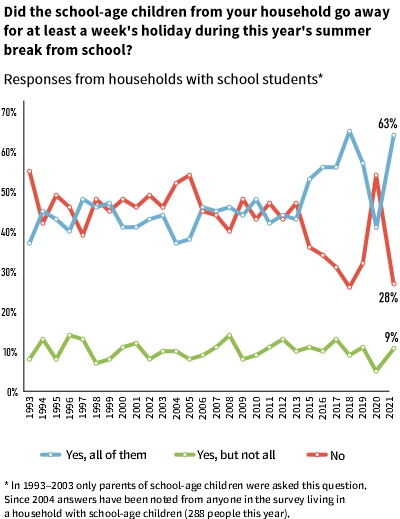34/2021
2021-11-09
Summer Holidays in the Second Year of the Pandemic
During this year’s summer break from school, decidedly more schoolchildren than last year went away for at least a week. The total percentage of households organising this sort of holiday for their school-age children rose by 26 points on last year (from 46% to 72%) and there was a rise of 22 percentage points in households where all school-age children went away. It has to be stressed that 2020 was in this respect one of the worst years since CBOS records began: in the period 1993–2021 there have only been four years when a majority of families did not ensure a holiday for their children. One must also remember that last year’s drop came after a very good five-year period, during which most of the households surveyed reported that all their school-age children had been away for a summer holiday of at least a week. This year’s responses are virtually the same as in 2018, which was a record year. It would therefore seem that, in this second pandemic summer, more children and young people of school age have been away than in 2019, the summer immediately before the pandemic began.

|
People have learned to live with their fear, and the majority decided to let their children go away on holiday. CBOS research shows this clearly: while last year the Covid pandemic was one of the two major reasons for opting out of children’s holidays away, by this year it had faded into the background, with only 3% of respondents from households with school-age children volunteering this reason for one of the children not going away, compared to 22% in 2020 (i.e. 1% and 13%, respectively, of total respondents from households with school-age children).
More on this subject in the CBOS report.
The above data comes from ‘Current Events and Problems’ surveys carried out in the period 1993–2021.





